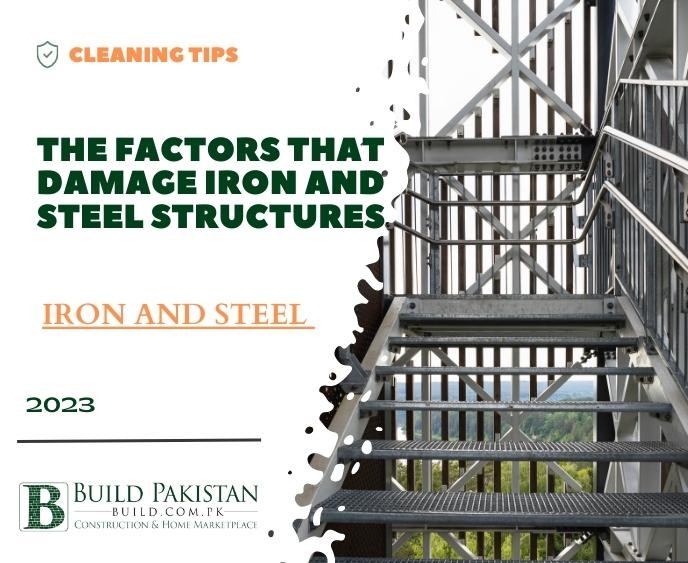The Factors That Damage Iron and Steel Structures

Introduction:
In the realm of modern infrastructure, iron and
steel stand as stalwart materials that shape our world. From soaring
skyscrapers to intricate bridges, these materials have enabled monumental
achievements. However, beneath their sturdy exterior lies vulnerability to an
array of forces. In this exploration, we delve into the intricate world of iron
and steel structures, understanding the factors that contribute to their
gradual deterioration. By comprehending these culprits, we can empower
ourselves to safeguard these pillars of our civilization.
Understanding Iron and Steel Structures:
Iron and steel
structures are marvels of engineering, forged from materials that combine
strength and versatility. They form the core of countless buildings, bridges,
and industrial complexes, thanks to their ability to withstand heavy loads and
support expansive spans. However, even these formidable materials are not immune
to the effects of time, environment, and external pressures.
Factors That Damage Iron and Steel
Corrosion:
The Relentless Nemesis: Corrosion is amo ng the most common and destructive factors that compromise the integrity of iron and steel structures. When exposed to moisture and oxygen, these metals undergo oxidation, forming rust that weakens the material over time. Corrosion is accelerated by environmental conditions, such as saltwater exposure and industrial pollutants.
Atmospheric Challenges:
Testing Resilience: The elements take
a toll on iron and steel structures, subjecting them to the whims of weather.
UV radiation, fluctuating temperatures, acid rain, and air pollutants
contribute to surface degradation and weakening of the materials. This exposure
leads to expansion and contraction, creating microcracks that gradually
undermine structural integrity.
Mechanical Stress and Fatigue:
A Slow Strain: Iron and steel
structures often experience mechanical stress from heavy loads, vibrations, and
cyclic forces. Over time, repeated stress leads to fatigue, manifesting as
microscopic cracks that propagate. Without intervention, these cracks can grow
and eventually cause structural failure.
Chemical Exposure:
Silent Erosion: Industrial environments expose
iron and steel structures to corrosive chemicals that erode their surfaces.
Acids, alkalis, and corrosive gases attack the material, accelerating its
deterioration. This chemical erosion weakens the structural integrity and
compromises safety.
Structural Overloading:
Beyond Capacity: Structures pushed
beyond their designed load-bearing capacity are at risk of damage. Overloading
can lead to bending, buckling, or even collapse. Ensuring that structures are
designed to handle expected loads is essential to prevent overloading-related
damage.
Strategies for Preservation
Regular Maintenance:
Periodic inspections and
proactive maintenance are crucial for identifying early signs of damage and
addressing them before they escalate.
Protective Coatings:
Applying protective
coatings and galvanization shields iron and steel from corrosive agents,
extending their lifespan.
Proper Design:
Well-designed structures that
consider factors like load distribution and material compatibility are less
susceptible to damage.
Resistant Coatings:
Applying weather-resistant
coatings shields iron and steel structures from atmospheric cha llenges,
preventing degradation.
Structural Monitoring:
Implementing structural health
monitoring systems helps detect anomalies and potential damage, allowing for
timely intervention.
Conclusion:
Safeguarding Our Foundations: The journey into understanding the factors that damage iron and steel structures uncovers a world of challenges and vulnerabilities. Corrosion, environmental elements, mechanical stress, and more—all play roles in the gradual erosion of these structures. However, armed with knowledge, we can take action to safeguard these foundational components of our world. Through diligent main tenance, protective measures, and thoughtful engineering, we can ensure that iron and steel structures continue to stand as enduring symbols of human achievement, resilient against the forces that seek to undermine them.









